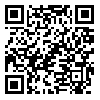Volume 4, Issue 3 (Autumn 2018)
J Health Res Commun 2018, 4(3): 34-41 |
Back to browse issues page
Download citation:
BibTeX | RIS | EndNote | Medlars | ProCite | Reference Manager | RefWorks
Send citation to:



BibTeX | RIS | EndNote | Medlars | ProCite | Reference Manager | RefWorks
Send citation to:
Ramzani S, Etemadinezhad S, Yazdani Charati J. Evaluation of the Prevalence of Needlestick Injuries and Related Factors among Nurses in Sari during 2017. J Health Res Commun 2018; 4 (3) :34-41
URL: http://jhc.mazums.ac.ir/article-1-352-en.html
URL: http://jhc.mazums.ac.ir/article-1-352-en.html
Abstract: (4687 Views)
Introduction and purpose: Needlestick injuries are among the most common types of occupational injuries in nursing. The importance of this type of injury lies in the fact that it has the potential risk of the transmission of blood-borne infectious disease. This cross-sectional study was conducted on four hospitals staff in 2017 in order to identify the causes and frequency of these types of injuries. Methods: Among 212 medical workers that were selected using census method, 132 individuals filled the questionnaires. Data were analyzed using SPSS (version 21) through logistic regression, analysis descriptive, and the Chi-square test. Results: The obtained results showed that 60.6% of the subjects were female, and 39.4% of them were male. The needle stick exposure did not significantly differ between males and females. In addition, 38.1% of the questioned staff had a history of needle injuries in the previous year. Among the accidents caused by a sharp instrument, needle stick injuries had the highest frequency (64.7%). Furthermore, the most common reaction was wound washing with water and soap (82.4%). On the basis of the results, 62.7% of the need stick injuries were due to the high level of nurses’ workload. Conclusion: Regarding the high frequency of needlestick injuries among nurses, nursing managers should consider preventive approaches, such as the maintenance of safety measures in work environment, accomplishment of complete vaccination coverage, and provision of a reliable reporting system, to confront with this problem.
Type of Study: Research(Original) |
Subject:
Occupational Health
Send email to the article author
| Rights and permissions | |
 |
This work is licensed under a Creative Commons Attribution-NonCommercial 4.0 International License. |







